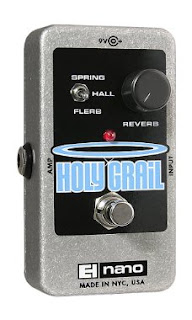I guess I really could give you all the usual discuss user-friendly
interface and the skilled audio that the makes love to ramble about within their
"evaluations", but I know you may get that from their website. What I
can tell you about is how these pedals sound in my experience, and how simple
(or challenging) they're to use, and how actually they are built, from the musicians
standpoint.
The RP string continues for the RP355 with increased or less
precisely the same design and efficiency throughout, using the supplement of
integral foot controllers on the RP255 and RP355, and starts with the RP55. Particularly for a person who represents live, is
by using RP1000 and the RP500 where issues indeed
start to get exciting.
Development
The RP500 are primarily
designed such as a container. Trust me when I let you know, this helps when
your playing lives. Nothing like a switch
that is damaged whenever you're about to
launch into your favorite solo. I've also pointed out that all the link items
in the back of the machine have become active
(XLR, guitar feedback/result/USB/CD). That is likely since they're secured in
to an aluminum casing, which helps to break,
and avoids movement. I've had this happen
with a reverb pedal. The top part nevertheless, could be the footswitches.
They're, again, manufactured from aluminum. Somewhat
hard to damage together with your size 12 cowboy boots, no matter how hard you stomp. The weak point I could discover would
be the twisting buttons used for impact tweaking. They are made of plastic and situated consequently potential for
damage, nearby the footswitches there.
Features
The RP500 and RP1000 are basically the same systems, with a few essential functions. They both possess a line of effects
footswitches for the wait, distortion
managing compressor, and reverb. These consequences all could be changed to the product itself utilizing the calls, or
using the X- Edit application that comes bundled with the products.
Many classic, and contemporary sounds could be replicated with this particular setup including distortions just like the Ibanez TS- 9, TS -808 Tube Screamer, Arbiter Fuzz Face Employer DS-1 much more and. This is often within quite a few multi-effects pedals.
However, many trendy improvements will be the Digitech Whammy if you're into Jack White, or Tom Morello, or the Univibe and Octavia if you're into Jimi Hendrix.
Many classic, and contemporary sounds could be replicated with this particular setup including distortions just like the Ibanez TS- 9, TS -808 Tube Screamer, Arbiter Fuzz Face Employer DS-1 much more and. This is often within quite a few multi-effects pedals.
However, many trendy improvements will be the Digitech Whammy if you're into Jack White, or Tom Morello, or the Univibe and Octavia if you're into Jimi Hendrix.
They also both feature a 20-second
looper. This attribute is what convinced me to get the RP500 when I was
taking a look at investing in a dedicated looper (Point 6 JM4) but understood I would get far more boom
for the money with this particular model. I also tried the JM4 and believed the
noise was destitute.
If you have 2 amps, or even better a PA with a number of
powered monitors, you are able to run a stereo sign (via XLR or 1/4"
results) and build some incredible looks.
I really do this with my Fender Twin Reverb tube amp, plus a standard practice amp ! Try some outcomes like perhaps the Circular Audio, or the Tremolo Panner and also you get some incredibly appealing panning looks throughout the speakers. I can only imagine what two excellent amps would sound like.
I really do this with my Fender Twin Reverb tube amp, plus a standard practice amp ! Try some outcomes like perhaps the Circular Audio, or the Tremolo Panner and also you get some incredibly appealing panning looks throughout the speakers. I can only imagine what two excellent amps would sound like.

